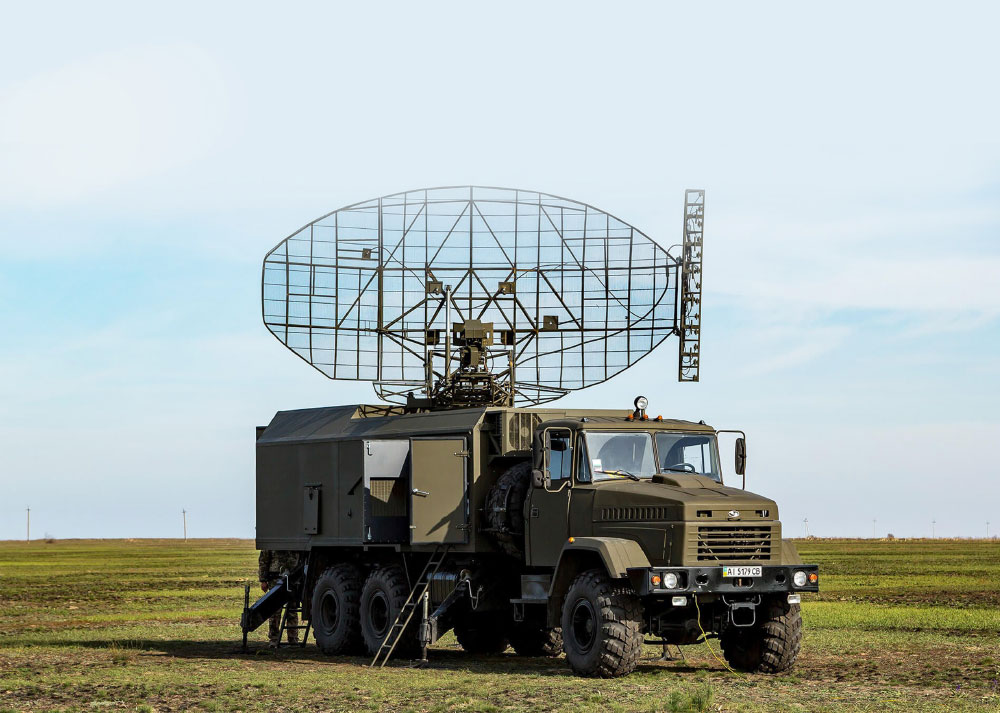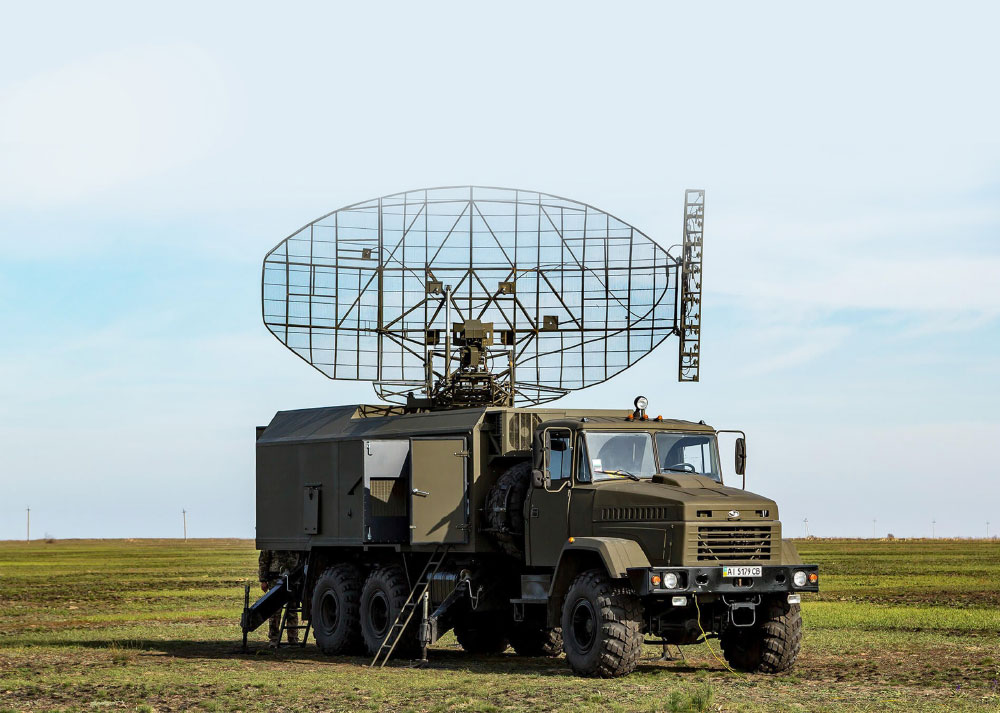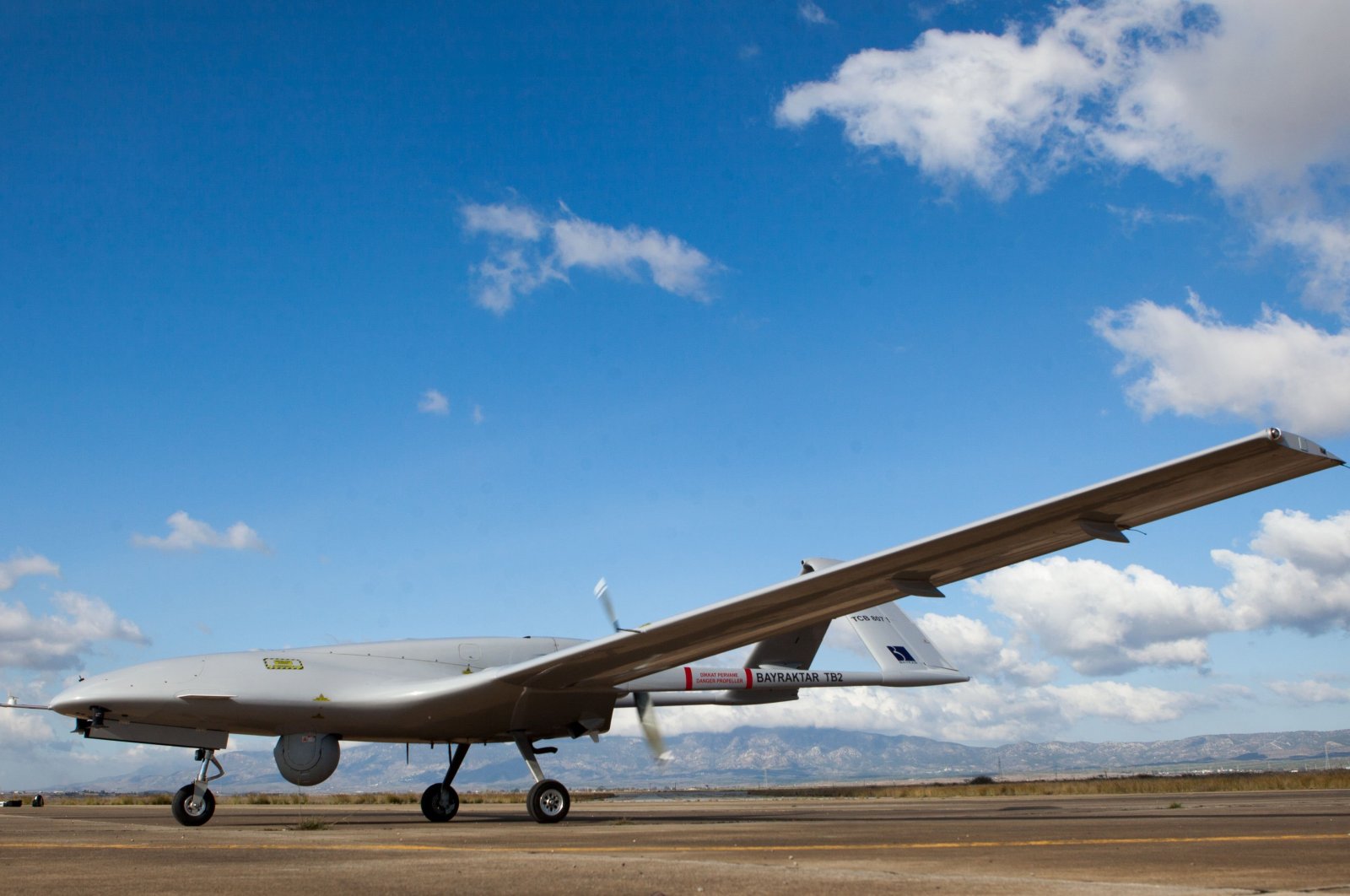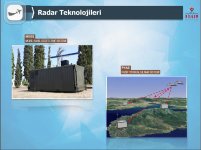You are using an out of date browser. It may not display this or other websites correctly.
You should upgrade or use an alternative browser.
You should upgrade or use an alternative browser.
Bayraktar TB2
Contributor
- Messages
- 595
- Reactions
- 2,925
Aselsan PUHU man portable listening and direction finding system



Combat-Master
Baklava Consumer
ADOP-2000
ADOP-2000 provides automation of target detection, command, control and technical fire management functions of the fire support in the battlefield, and the implementation of the fire support in full harmony with other battlefield functional areas. It is a C4I system that allows the commander to make the necessary plans to fire with the appropriate weapon system and appropriate ammunition at the appropriate time, implement it, and use the fire support elements in the battlefield with maximum efficiency.
The ADOP-2000 allows weapons (cannons, mortars and multi-barrel rocket launchers) and target detection radars to be included in the automation of the fire support, while allowing the technical fire management functions to be performed for these weapons. In addition, ADOP-2000 ensures that tasks such as meteorology measurement and topographic ground measurement are performed accurately, precisely and rapidly, and the data obtained are transferred to other systems in digital environment.


ADOP-2000 provides automation of target detection, command, control and technical fire management functions of the fire support in the battlefield, and the implementation of the fire support in full harmony with other battlefield functional areas. It is a C4I system that allows the commander to make the necessary plans to fire with the appropriate weapon system and appropriate ammunition at the appropriate time, implement it, and use the fire support elements in the battlefield with maximum efficiency.
The ADOP-2000 allows weapons (cannons, mortars and multi-barrel rocket launchers) and target detection radars to be included in the automation of the fire support, while allowing the technical fire management functions to be performed for these weapons. In addition, ADOP-2000 ensures that tasks such as meteorology measurement and topographic ground measurement are performed accurately, precisely and rapidly, and the data obtained are transferred to other systems in digital environment.
Bayraktar TB2
Contributor
- Messages
- 595
- Reactions
- 2,925
Aselsan DASS FLIR from over 20650 feet (year 2018)


Edit: Corrected it is indeed dass.
Edit: Corrected it is indeed dass.
Last edited:
Bayraktar TB2
Contributor
- Messages
- 595
- Reactions
- 2,925
Latest twit from SSB DEMİR said we are working on it.. No ETA unfortunately.
İt is DASS. Time: 28.06.2018. Very good.
Last edited:
Is there any date for Aselsan DASS? I know it can take some time but what are your thoughts?
Alhamdulillah! That's very good news. Thank you for the information.
You're welcomeAlhamdulillah! That's very good news. Thank you for the information.
Reviewbrah
Contributor
Combat Jamming and Deception Simulator (MUKAS)
General Features
- Electronic Warfare Simulation on HF and V/UHF frequency bands
- Electromagnetic Spectrum Control
- Trick/Decieve EH (Electronic Warfare) frequency bands using RF Spectrum
- Before/After Mission Planning
Reviewbrah
Contributor
P-180U and MARS-L Radar Purchase from Ukraine and TuRAF PYAS Project

According to Ukrainian press, Ukrspetsexport (the only institution authorized by the Ukrainian Government to fulfill the export potential of Ukraine's military-industrial complex), a subsidiary of the Ukrainian state-owned defense company UkroBoronProm (UOP), delivered two P-180U and two MARS-L radars to SSTEK Defense Industry Technologies in late December 2019, under a contract worth US$11,144 million. According to the reports, the total cost of the L-Band MARS-L radar (on the Ural and KrAZ chassis) produced by NPE Aerotechnics-MLT Company is US$ 7,544 million, and the total value of the VRF-Band P-180U (P-18MA) radar (on the KrAZ chassis) is US$3,6 Million.
The mobile L-Band MARS-L is a ground-based combined PSR/SSR (Primary and Secondary Surveillance Radar) system. The combined use of primary and secondary channels considerably increases the detection range and accuracy of finding the coordinates of aerial objects. Additionally, the availability of additional aircraft information such as current altitude, remaining fuel, condition of the onboard systems, etc., together with primary radar information, significantly increases flight safety. It also reduces the likelihood of accidental targeting of civilian aircraft by air defense systems. The MBTF (mean time between failures) performance of the MARS-L, which is a mobile low altitude surveillance radar capable of providing coverage up to 110km on the PSR channel and 150km on the SSR channel, is given as 5,000 hours.
The ground-based VHF (metric band) P-180U (P-18MA) is a long-range surveillance radar which provides the radar information and flight routes of aerial objects. The solid-state P-180U is the modernized and improved version of the VHF-Band 2D (two-dimensional, provides only azimuth and range data) P-18 early warning radar developed during the Soviet Union. The system has coverage of 360km km in range and up to 35km in elevation, and thanks to its long wavelength, the P-180U radar can detect RAM coated aerial platforms with a very high percentage. The system consists of a 360-degree rotating radar antenna and a control center based on KrAz tactical vehicle chassis. It is claimed that the P-18MA/P-180U radar system, which is also used by the Ukrainian Armed Forces, could detect the F-117A Nighthawk Stealth Fighter from 61km.
There are different speculations regarding the procurement of the MARS-L and P-180U radars, which are considered to be capable of detecting stealth aircraft as they operate on the L and VHF bands, by SSTEK Defense Industry Technologies, which was established in 2016 as a 100% subsidiary of the Presidency of Defense Industries to operate in the fields of defense, aviation, space, and homeland security. Considering the number of the systems supplied, the radars may have been procured for testing/evaluation purposes in indigenous aircraft and missile projects or may have been purchased for reverse engineering or use in EHTES (P-18 radars of the Egyptian Armed Forces were upgraded to the P-180U level by the Ukrainian company).
Although the history of diplomatic relations between Turkey and Ukraine dates back 28 years, the military-technical cooperation agreement between Ukraine and Turkey, which is one of the first countries to recognize Ukraine's independence, was renewed in 2014. As part of this process, joint production decisions were made in various areas such as armored vehicles, aircraft engines, missile systems, joint radar production, navigation systems, as well as communication and space projects. Turkish and Ukrainian defense industry representatives gathered in Ankara in 2015, and a strategic cooperation agreement was signed between the two countries in the field of the defense industry in 2016. In July 2018, Turkey and Ukraine conducted the first-ever Turkey-Ukraine Defense Industry Cooperation meeting to accelerate their defense cooperation. The 7th Turkey-Ukraine Defense Industry Cooperation meeting was held at the Ministry of Defense of Ukraine in Kyiv on January 21-24, 2020.
The first activity between Turkey and Ukraine in the field of radar systems was the Memorandum of Understanding (MoU) signed on April 8, 2016, between Havelsan and Ukroboronprom, Ukraine's state defense industry enterprise, for the joint production of the Passive Sensor System (PASİS). During the Arms and Security 2016 Fair held in Kyiv on October 11, 2016, a cooperation agreement was signed between Havelsan and Ukrinmash, a state-owned company under Ukroboronprom, for the production of passive radar systems to increase the long-range detection capabilities of Turkey and Ukraine to a range of 600 km. According to Interfax News Agency, the development of the new passive radar system will be financed by Turkey, and the emerging product will be different from the world-renowned Kolchuga passive radar (ESM System can detect up to 800km). Israel bought a new generation Kolchuga-M Passive Radar System from Ukraine in March 2018 via the company Airstom, and the system was delivered in the same year. It is considered that the Kolchuga-M Passive Radar System can be used in electronic warfare tests, training, and exercises to be carried out by the Israeli Air Force.
Turkish Air Force PYAS Project
Turkey is no stranger to passive radars; in fact, multiple projects were carried out in this field by domestic companies and institutions. Furthermore, an indigenous passive radar system was developed for the Turkish Air Force under the Passive Broadcast Detection System (PYAS) Project, which was accomplished in cooperation with TÜBİTAK BİLGEM Information Technologies Institute (BTE) Radar Systems Laboratory, Istanbul Medipol University, and Gebze University.
In the TÜBİTAK 2019 Annual Report published recently, the following information was shared regarding the latest situation in the project: "Factory Acceptance Tests (FAT) of the Passive Broadcast Detection System (PYAS) developed for the Turkish Air Force, which performs long-range target positioning and tracking via signals broadcast from air targets, have been successfully carried out." Considering this information, we can say that the PYAS FAT process was completed in 2019, and the Site Acceptance Test (SAT) process have started. Since no information regarding the delivery of PYAS to the Turkish Air Force was shared in the Annual Report, the system may be delivered within the first half of 2020 following the SAT process.
However, at the Military Radar and Border Security Summit held in Ankara on October 2-3 2018, important information about the Passive Broadcast Detection System (PYAS) developed by TÜBİTAK BİLGEM for the Turkish Air Force was shared with the participants (the first field trials were completed in 2018 at the TÜBİTAK Gebze campus). Also, it was stated that the project, which started on December 15, 2015, was planned to be completed on December 17, 2018.
The Passive Broadcast Detection System (PYAS) was developed as part of the Passive Broadcast Detection System Development Project under the TÜBİTAK Public Sector Research and Development Projects Support Program (SAVTAG 1007) to meet the needs of the Turkish Air Force Command. The project proposal was published on March 13, 2015 and was closed on May 29, 2015. PYAS is a passive broadcast detection system that can detect and track signals broadcast from air targets. The system captures broadcasts/signals (both lower and upper frequencies) of various electromagnetic energy sources on the air targets through the receivers located in different locations and finds their position in three-dimensional space. The signals in the Lower Frequency Band (960-1.216MHz) are broadcast by Mode 1, 2, 3AC, Mod-S, TDL (Link 16), and TACAN, while the Radar and RF Jammers emit signals in the upper-Frequency band (8,000-12,000MHz).
Capable of Broadband frequency scanning, PYAS also has phase-interferometry, highly accurate time synchronization, signal detection, feature extraction, signal binding, and SSR Mode-S decoding capabilities.
The PYAS system can detect the arrival time (Time Difference of Arrival/TDOA) between the lower or upper-band signals emitted by air targets and find the air targets' position in 3D space by measuring the relative delays with 4 passive receivers. Unlike other Passive Emitter Tracking (PET) systems in the market, PYAS can also find target aircraft positions using the Angle of Arrival/AOA method. It is enough for a single sensor to detect the signal, but for 3D positioning, the signal must be detected with at least 2 sensors.
The main disadvantage of passive radar systems, which are difficult to detect and deceive, is that they are signal-dependent, so if the threat does not emit a signal, the system cannot detect the target. The higher the bandwidth of the broadcast signal, i.e., the stronger, the better/longer the system's resolution and detection range. Since there are numerous disturbing effects and signals (background clutter) in the environment, target positioning and screen display in passive radars are not as clean as in standard radars, so the possibility of false alarms is much higher. To prevent this, an advanced tracking and merging algorithm was used in PYAS.
Since passive systems are very dependent on geography, the sensors must be optimally positioned in the field and perfectly synchronized with each other to maximize system performance. A special tool/software was developed to ensure that PYAS sensors can be positioned optimally in the field. Thanks to this software, which was stated to be delivered to the Turkish Air Force with the PYAS system, the operators will be able to see the areas covered by the sensors and detect blind spots on the 3D map. The special algorithm/software can calculate the most suitable geographical positions for the 3D placement of PYAS sensors and provides the optimum placement on the map.
One of the 4 sensors developed for the Turkish Air Force under the PYAS Project act as the command center, although the exterior of each looks the same, the sensor contains additional equipment. The PYAS sensor is a 5m long shelter placed on a trailer with an 8m collapsible mast and electronic cabinet. There is a radome located on top of the mast, which contains the antennas and RF signal conditioners operating in different bands (the term radome is a portmanteau of the words radar and dome). PYAS sensors are operated by two personnel. The systems communicate with each other via a radio link or, if available, with a network (there are radio link antennas on the shelter). The first field trials of PYAS were carried out in 2018 at the TÜBİTAK Gebze campus. The PYAS sensor, which acted as the command center during the field trials, was deployed to the Gebze campus (next to the MGR radar), while the other three (one was deployed to the military airport in Yalova, the other two were deployed to two different hills at different locations) were positioned 15-20 km away from the Command unit. Although the PYAS sensor was not fully completed and did not reach its final performance, the system managed to detect signals up to 90km in the first field tests conducted in a small location (distance between sensors was 5km).
In the TDOA target detection method, as the distance between the receivers/sensors increases, the system performance increases as well, and the system provides the best results when the target aircraft passes through the exact center of the sensors. Therefore, when the distance between the receivers is increased from 5km to 20km, it is considered that the system can detect signals from distances farther than 90 km. The power of the transmitters onboard the target aircraft is also another major factor that affects the target detection range. The detection range of the passive radar increases proportionally to the broadcasting power of the target aircraft. Since the radars can determine their output power, depending on the situation, they can emit low-frequency signals to lower their visibility or high-frequency signals to reach their maximum range. When a radar sends signals at the highest power, its broadcast may be detected at a distance of 300 or 500km, but if the power is low (for example, an LPI radar), it may not be heard even from a range of 50km.
To meet the needs of the Turkish Air Force, the Passive Combined Detection System Development Project was initiated as an R&D project originating from TÜBİTAK SAVTAG and Havelsan EHSİM won the tender. The contract signed between TÜBİTAK, the Ministry of National Defense (MSB/MoND), and Havelsan EHSİM came into force on August 15, 2013, and the studies on the project were then started. The project aimed to develop a Passive Combined Detection System (PBAS) that utilizes Analog FM Radio, Digital Radio (terrestrial), and Digital TV broadcasts. Although a 36-month calendar was planned for the project, unfortunately, this could not be achieved. In the 2016 Annual Report of the company, published on February 28, 2017, it was stated that the work on the PBAS Project was ongoing, and the project was aimed to be completed in 2017. According to the 2016 Annual Report, the system hardware and software development studies continued in 2016 in parallel with the data collection, recording, testing, and algorithm improvement activities in the field. As part of the project, firstly, a Passive Radar Signal Collection and Recording System (STKS) were produced, and then the system algorithms were developed by processing the data collected with this system. In this framework, STKS was integrated onto a commercial vehicle, FM and DAB band antennas were produced, antenna beamforming units and receivers were developed, and field studies were carried out with the SKTS vehicle to collect signals and data. Target analysis and tracking algorithms were developed by analyzing the collected and recorded signals in a laboratory environment. Moreover, mechanical modifications of 4 STKS vehicles scheduled to be delivered to the Air Force Command at the end of April 2017 were completed. One of the vehicles was built to operate on the FM band, and field tests were conducted in 2016 with this vehicle. Following the tests, the user (Turkish Air Force) and the customer (Ministry of National Defense) stated that the STKS met the requirements set by the authorities. To create a reliable test environment, an FM broadcast station was established and was put into operation for tests.
We believe that the Passive Radar Signal Acquisition & Recording System/Passive Compound Detection System (consists of 4 vehicles) produced by Havelsan EHSİM will operate integrated or interactively with the PYAS system developed by TÜBiTAK BİLGEM (consists of 4 shelters). When the PBAS/STKS and PYAS Systems are supported with the Electro-Optical System (EOS, actually an Infrared Search and Track [IRST] System) vehicle based on the LandRover Defender developed for HİSAR-O system, it will provide a significant capability gain to detect stealth aircraft with a low Radar Cross-Section (RCS). This capability will be further enhanced by the commissioning of an indigenous Over-the-Horizon (OTH) radar system that will operate in the VHF/UHF band. In this respect, the Memorandum of Understanding (MoU) signed between Havelsan and Ukroboronprom for the joint production of the Passive Sensor System (PASİS) is of utmost importance

P-180U and MARS-L Radar Purchase from Ukraine and TuRAF PYAS Project
www.defenceturkey.com
More images of PYAS Passive Radar System
Attachments
''If we place the ASELSAN-made T / EIRS in the TRNC, we will be able to monitor a significant portion of the air elements flying at a suitable range and altitude in the Eastern Mediterranean.''
Not sure, is it accurate?
Not sure, is it accurate?
Reviewbrah
Contributor
RAF military bases in Cyprus are one of the most capable for signal intelligence in the world. It is used to track Cyprus, Turkey, Syria, Lebanon, Israel and Egypt ever since 1947.''If we place the ASELSAN-made T / EIRS in the TRNC, we will be able to monitor a significant portion of the air elements flying at a suitable range and altitude in the Eastern Mediterranean.''
Not sure, is it accurate?
and now with the Russian signals, early warning systems from naval and airbase in Syria
There is a lot of work to do
I am commenting about it because people forget this.
Last edited:

Turkey develops domestic satellite terminals for drones
Turkish information technologies firm CTech has begun to deliver SATCOM On-The-Move (SOTM) terminals for unmanned aerial vehicles (UAVs) as of July. The...
Reviewbrah
Contributor
Images from Sadfor Savtera, original source is from defence magazine
Seems like Özel Görev Gemisi was TCG UFUK
Özel Görev Uçağı
Last edited:
With it's improved features, our new national sonar, YAKAMOS 2020 enables our combatant surface ships such as corvettes and frigates to detect potential threats from much longer distances.
Reviewbrah
Contributor
Aselsan working on a new 3D Search Radar for the Navy
The latest serial production model of Aselsan CATS. Aselsan have to update their brochures...
View attachment 5137
View attachment 5138
Like the flir is looking down, yere bakan yurek yakan....






